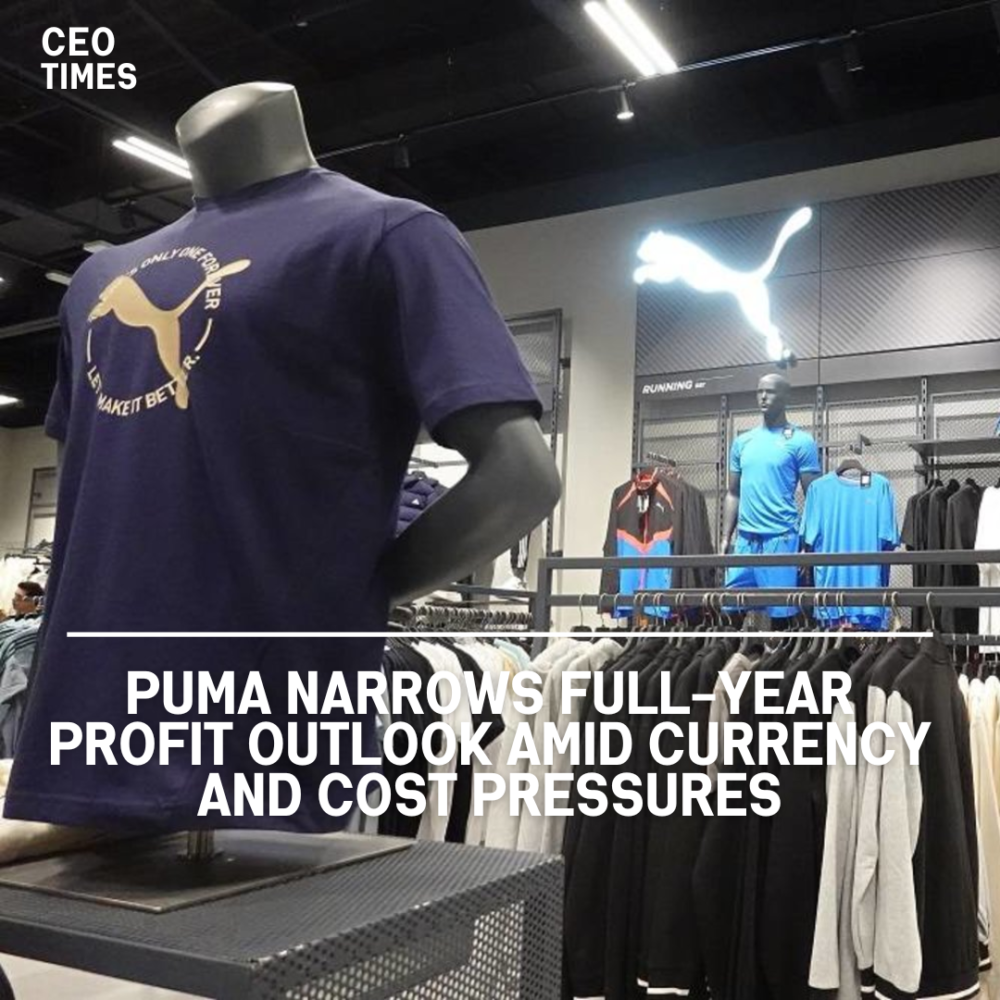On Wednesday, German sportswear maker Puma announced that it had narrowed its full-year core profit outlook. The company cited anticipated currency headwinds, higher freight costs, and continued muted consumer sentiment as factors affecting its performance.
Puma now expects operating profit (EBIT) to be between 620 million and 670 million euros ($676-$731 million), down from the previous range of 620 million to 700 million euros.
Impact of Marketing Initiatives and Consumer Demand:
Puma, which recently launched new marketing initiatives to better compete with larger rivals like Adidas and Nike, is facing challenges with weaker consumer demand and excess inventory at its retail partners. These factors have contributed to the revised profit forecast.
Puma’s shares fell 3.5% in early Frankfurt trading following the announcement.
Full-Year Revenue Outlook:
The company confirmed its full-year outlook for currency-adjusted revenue, expecting mid-single-digit percentage growth based on a strong order book for the year’s second half.
Puma also anticipates that net income in 2024 will align with the operating result, following a reported net income of 304.9 million euros in 2023.
Quarterly Sales and Regional Performance:
Currency-adjusted sales for the quarter increased by 2.1% to 2.12 billion euros, matching the 2.15 billion euros expected by analysts. The growth was driven by a 9% increase in sales in the Americas region.
In the Europe/Middle East and Africa region, currency-adjusted sales decreased by 4.3% to 817.9 million euros. This decline was due to reduced sales in Eastern Europe, the Middle East, and Africa, offsetting a return to growth in Europe.
The Asia/Pacific region saw a sales increase of 1.9%, supported by growth in Greater China. Despite negative currency effects, Quarterly EBIT rose by 1.6% to 117 million euros.


















